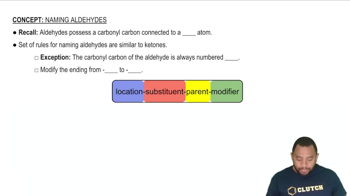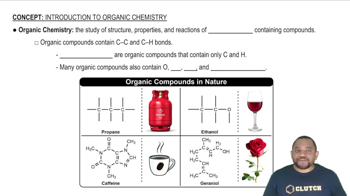Textbook Question
List the products of each amine reaction. a.


 Verified step by step guidance
Verified step by step guidance



List the products of each amine reaction. a.
List the products of each amine reaction. b.
List the products of each amine reaction. c.
Identify each organic compound as an alkane, alkene, alkyne, aromatic hydrocarbon, alcohol, ether, aldehyde, ketone, carboxylic acid, ester, or amine, and provide a name for the compound. c.
Identify each organic compound as an alkane, alkene, alkyne, aromatic hydrocarbon, alcohol, ether, aldehyde, ketone, carboxylic acid, ester, or amine, and provide a name for the compound. e.
Identify each organic compound as an alkane, alkene, alkyne, aromatic hydrocarbon, alcohol, ether, aldehyde, ketone, carboxylic acid, ester, or amine, and provide a name for the compound. a.